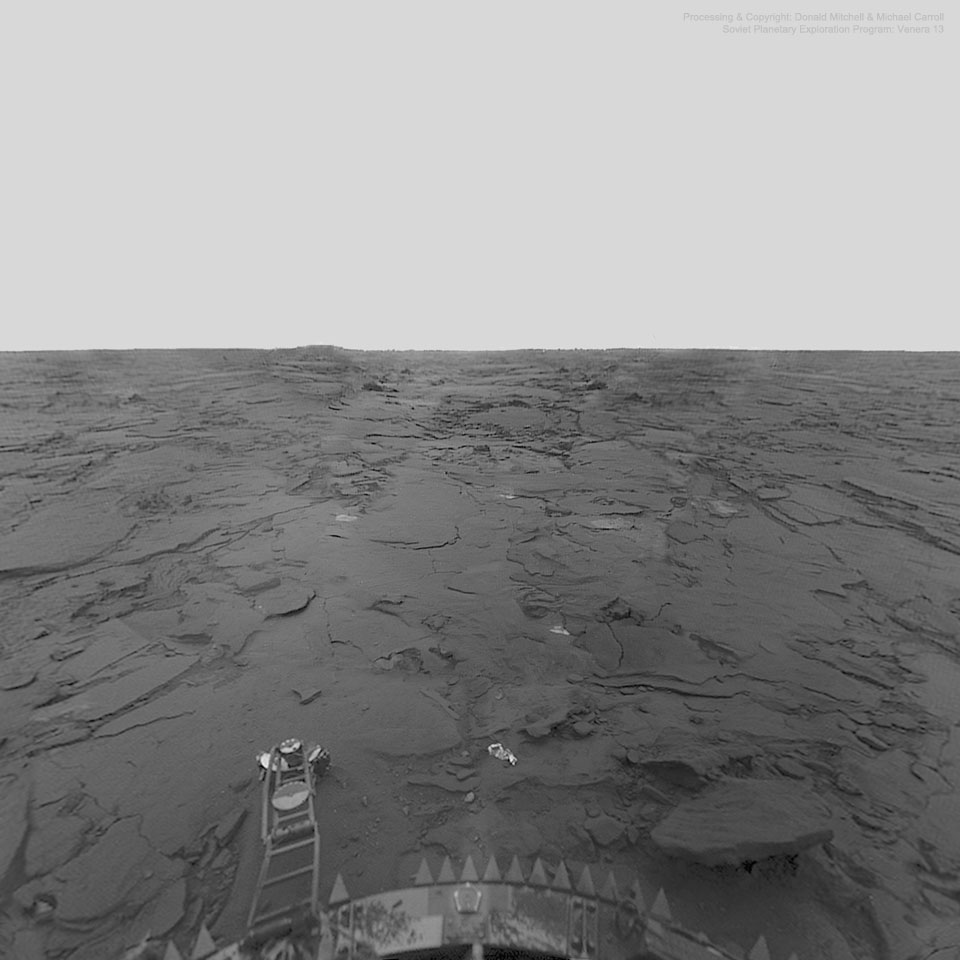2021年03月17日
The Surface of Venus from Venera 13
Image Credit: Soviet Planetary Exploration Program, Venera 13;
Processing & Copyright: Donald Mitchell & Michael Carroll (used with permission)
Explanation: If you could stand on Venus — what would you see? Pictured is the view from Venera 13, a robotic Soviet lander which parachuted and air-braked down through the thick Venusian atmosphere in March of 1982. The desolate landscape it saw included flat rocks, vast empty terrain, and a featureless sky above Phoebe Regio near Venus’ equator. On the lower left is the spacecraft’s penetrometer used to make scientific measurements, while the light piece on the right is part of an ejected lens-cap. Enduring temperatures near 450 degrees Celsius and pressures 75 times that on Earth, the hardened Venera spacecraft lasted only about two hours. Although data from Venera 13 was beamed across the inner Solar System almost 40 years ago, digital processing and merging of Venera’s unusual images continues even today. Recent analyses of infrared measurements taken by ESA’s orbiting Venus Express spacecraft indicate that active volcanoes may currently exist on Venus.
Tomorrow’s picture: open space
金星13号拍摄的金星表面
影像提供: Soviet Planetary Exploration Program, Venera 13;
影像处理与版权: Donald Mitchell & Michael Carroll (used with permission)
说明: 如果站在金星的表面上,你会看到什么?在1982年3月,使用降落伞在金星厚重大气里,进行空气刹车成功着陆的无人前苏联降落器金星13号,当年回传的这幅主题影像可作参考。在这片荒芜的原野里,它见到扁平的岩块、大片空旷的表面、以及金星赤道.菲比区上空单调无特色的天空。在影像的左下角,可见到用来进行科学量测之用的探测船穿透器,其右侧的的淡色物体则是抛弃的部分镜头遮罩。在接近摄氏450度高温和75倍地球气压的环境中,这艘经过硬化处理的金星太空船,只撑了大约2小时。虽然在将近40年前,金星13号的数据就已穿过太阳系内围回传,但像今天呈现的这种金星号不寻常影像的数位处理及影像拼接工作,至今仍持续在进行。近来分析欧洲航天局.金星快车号太空船的红外波段量测数据,显示金星目前或许仍然有活跃的火山。
明日的图片: open space



